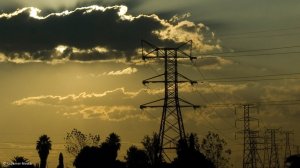The percentage of South African households with access to electricity had increased by 8.2% between 2002 and 2012, from 77.1% to 85.3%; however, a large amount of households were still without electricity or could not afford to use adequate electricity to satisfy their needs, Statistics South Africa (Stats SA) said on Thursday.
According to its General Household Survey (GHS), in 2012, 1.45-million, or 11%, of South African households did not have access to electricity, while another 3.6%, or 578 005, households accessed electricity informally or illegally.
Out of the 3.6% without formal access to electricity, 73.1% were connected to an informal source that the household paid for, while 11.7% made use of illegal connections.
“Although significant progress has been made by the national electrification programme to provide electricity to all households, future progress will be hampered by the cost-ineffectiveness of providing mains electricity to remote rural households and the difficulty of providing electricity to predominantly informal dwellings in largely unplanned and unstructured informal areas,” Stats SA said, adding that alternative sources of energy, therefore, had to be considered.
“Emphasis should be placed on off-grid renewable-energy solutions to improve energy access for remote and difficult-to-service poor households,” the organisation noted.
Further, the GHS found that, while rural households remained more likely than urban households to be without electricity, at 19.7% compared with 12.4%, up to 40.4% of households in informal urban areas also did not have access to mains electricity.
In rural areas, 33.5% of households in formal rural areas and 17.3% of households in tribal areas did not have access to mains electricity.
The highest percentage of households connected to the main grid were reported in the Northern Cape and the Free State, with 91.9% and 91.5% of households connected respectively.
Stats SA further said 98.2% of households with access to electricity used it for lighting, while 84.5% did so for cooking.
“This is significant as lighting is estimated to account for only about 5% to 10% of the energy consumed by poor households, while cooking and space heating is estimated to account for 90% or more of the total energy demand,” Stats SA said.
Further, the report found that, nationally, about 50% of households spent less than 5% of their income on electricity, while about 24% spent between 5% and 10%, 16.8% spent between 10% and 20%, and 8.8% of households spent 20% or more.
The percentage of households that spent more than 20% on electricity varied by province, but the lowest was observed in the Eastern Cape, at 5.9%, while the highest percentage was in Gauteng, where 11.4% of households spent more than 20% of their income on electricity.
Meanwhile, when asked how they would hypothetically deal with sudden increases in the price of electricity, one-third, or 36.4%, of households indicated that they would continue using the same amount of electricity, even though they would have to pay more.
Further, with regard to energy-saving measures, only 7% of households nationally were willing to install a solar water heater, 27.1% were willing to switch off their geysers when they were not in use and 33.4% said they would consider not using an electric iron.
However, 85.3% of households were willing to switch off their lights when leaving the house, 74.3% were willing to use stove plates sparingly and 74.2% would consider using energy-saving light bulbs.
EMAIL THIS ARTICLE SAVE THIS ARTICLE
To subscribe email subscriptions@creamermedia.co.za or click here
To advertise email advertising@creamermedia.co.za or click here











